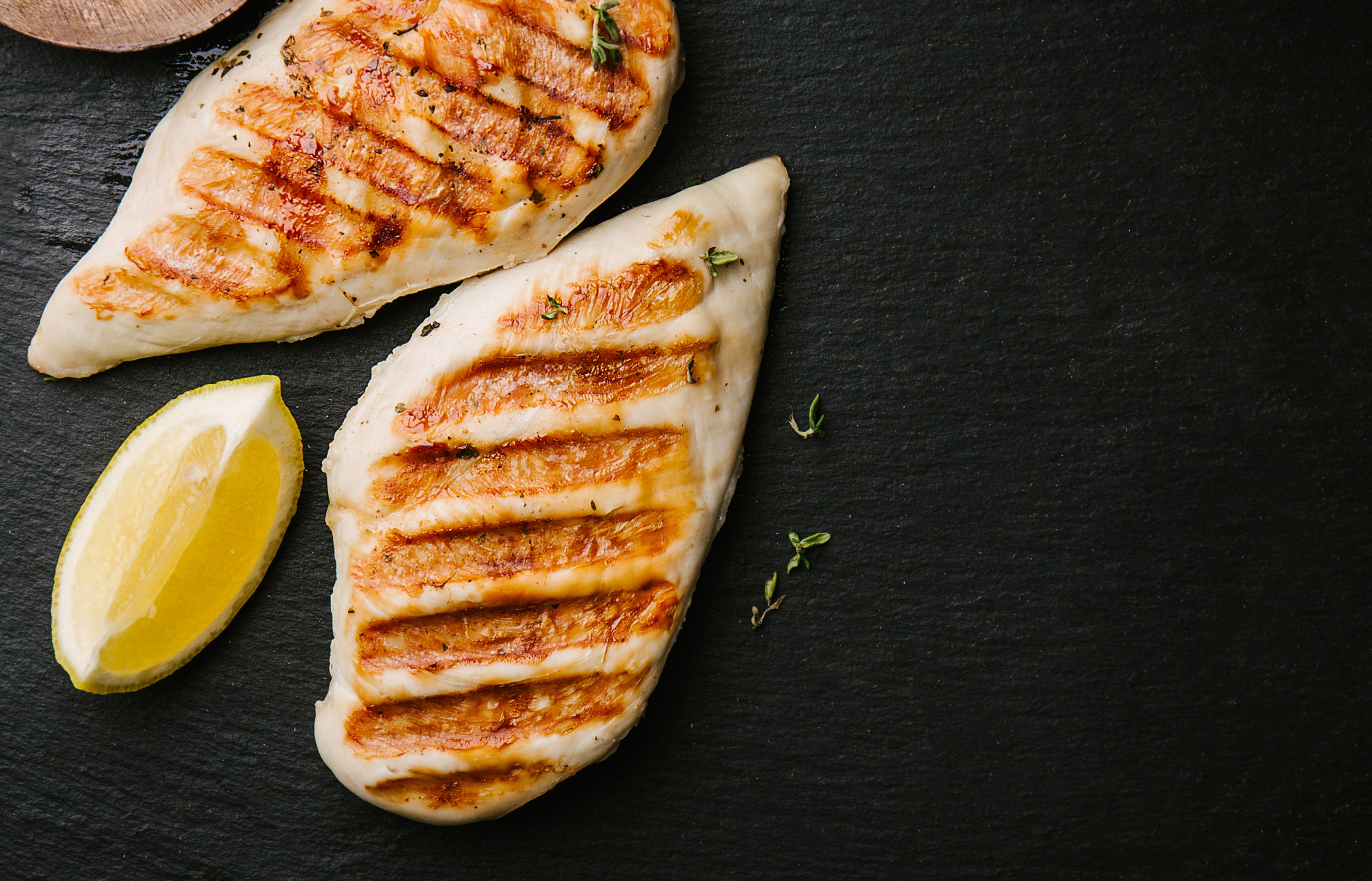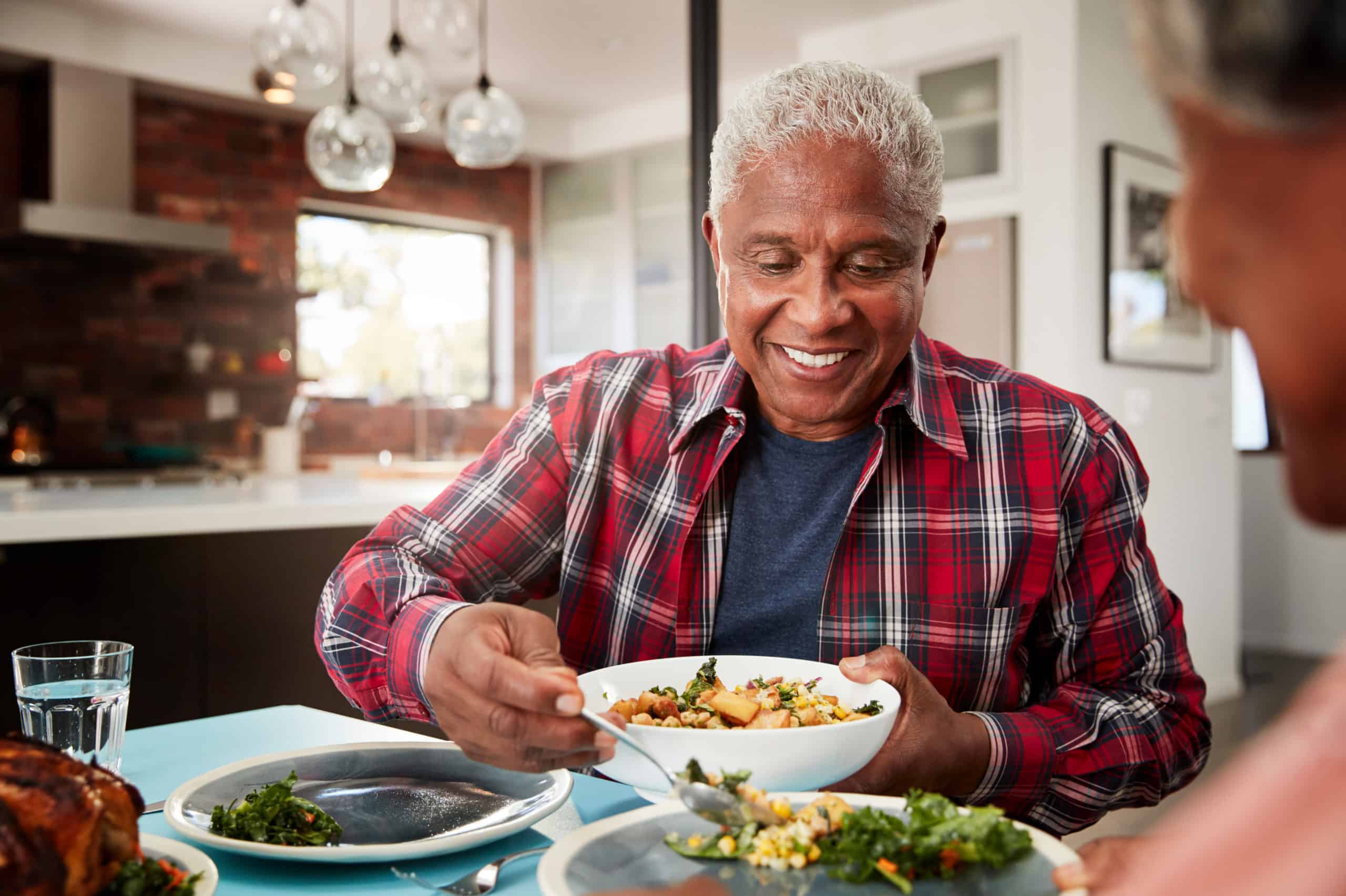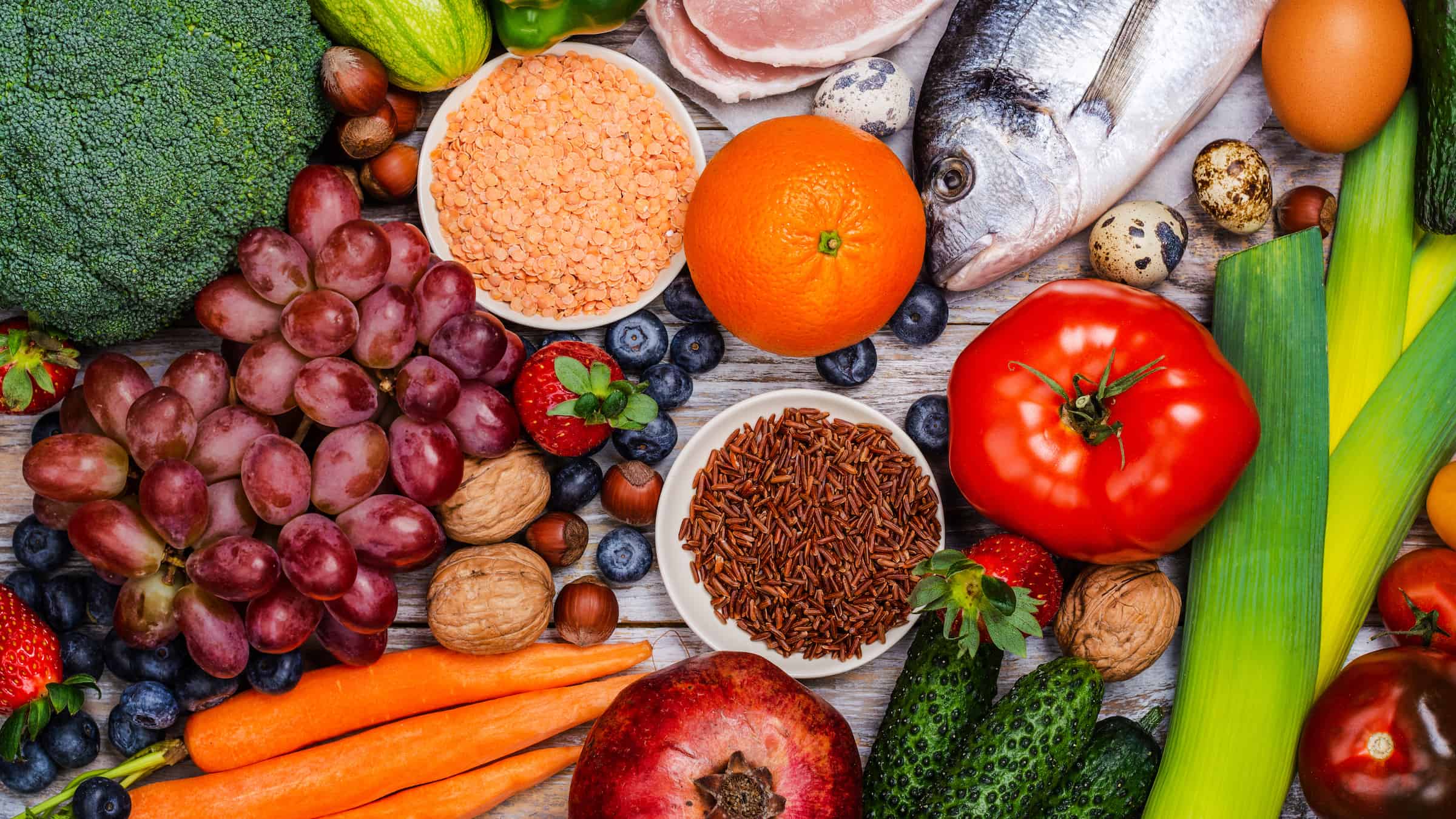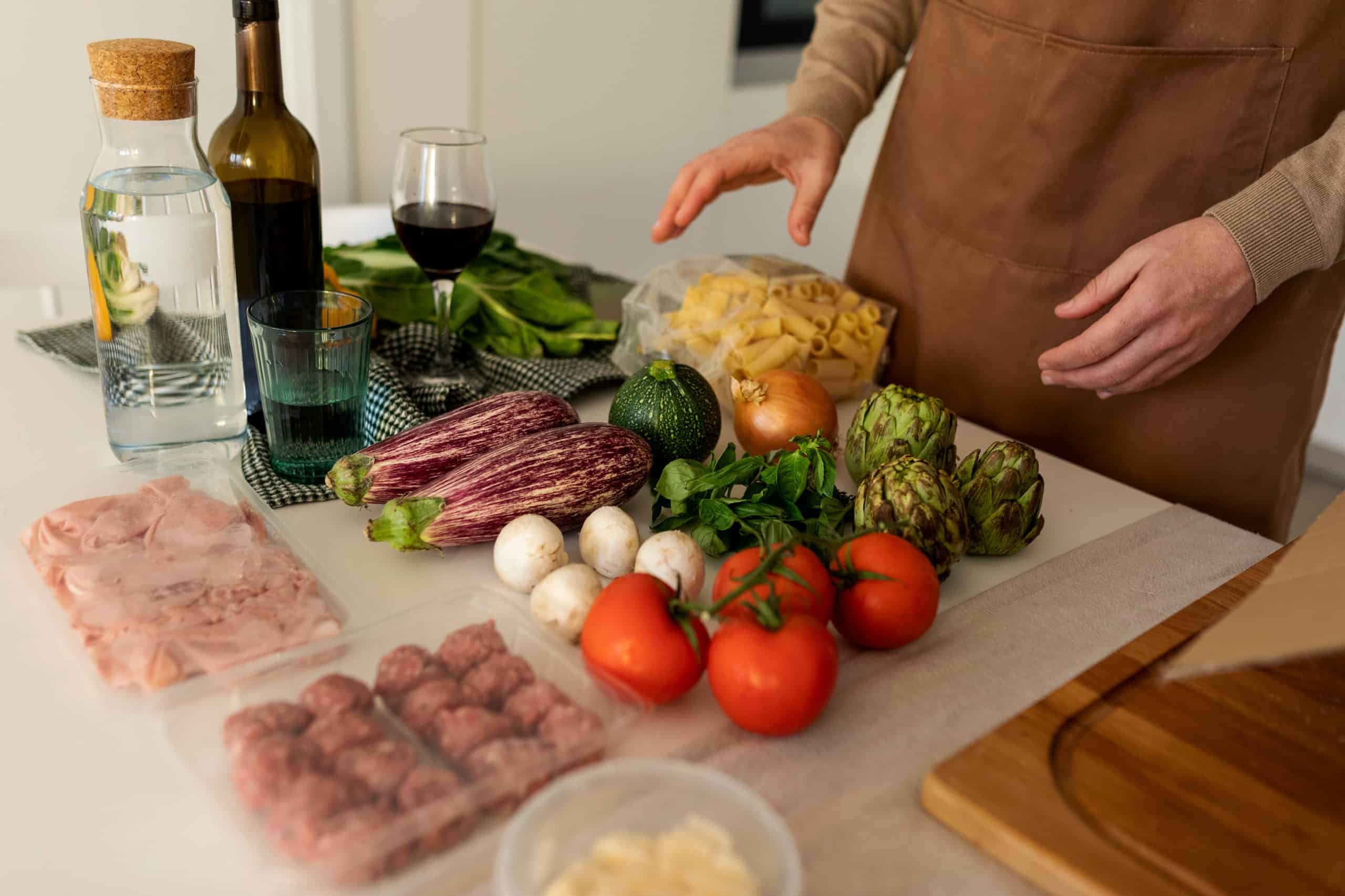- Whole foods like vegetables, fruit, and meats are the focus of the paleo diet.
- The paleo diet is restrictive—but includes lots of nutrient-dense foods.
- Modified paleo diets are common and can offer flexibility.
Fish, honey, nuts, meat, and seeds—what do all of these foods have in common? These are all foods that early humans in the Paleolithic era likely hunted, gathered, or fished to eat. But they’re also ones that paleo dieters rely on today.
If you’ve decided to go back to the basics and go all in on the paleo diet, you may be unsure about what you can and can’t eat. And that’s totally understandable.
After all, the paleo diet is all about eating how our hunter-gatherer ancestors did—but we can’t know for certain exactly what they ate millions of years ago. Because of this, there are many variations of the diet, making things even more confusing.
At Noom, we don’t consider any foods off limits. But we also get that people may want to try out eating styles like paleo—and we want to support healthy choices.
We talked to Noom coach Ashley Bannister, MS, RDN, to get a clearer idea of what a healthy paleo diet might look like. She gave us the ins and outs of what to eat on paleo—and what to avoid—and we compiled it all into a comprehensive list for you to use.
Note: Consult your health care provider before making any dietary changes.
This is Chapter 3 of Noom's Guide to the Paleo Diet:
- The Noom Kitchen Cookbook: Healthy Living Secrets
- What is the paleo diet? A deep dive for beginners
- Paleo diet for weight loss: FAQs and tips for success
- Paleo food list: What to eat on a paleo diet and what to avoid
- 101 paleo-friendly snacks to make or buy
- Paleo-friendly restaurants: Where to go and what to eat
- The ultimate beginner’s paleo shopping list
- Paleo vs. keto: Which diet is right for you?
- Are potatoes paleo?
- 50 of the best paleo diet recipes for simple, delicious meals
Rules of the paleo diet plan
The gist of the paleo diet is to eat whole foods—foods that humans of the Paleolithic era could have hunted and gathered.
We have some idea, but don’t know for certain what cavemen actually ate. Not to mention, early human diets varied based on where they lived in the world, and foods have evolved since then.
“The fruits and vegetables we see today may be very different from the ones that were readily available back then,” Bannister says.
That said, here’s a general breakdown of the dos and don’ts of paleo:
- Eat whole foods like fresh vegetables, eggs, and grass-fed, organic meats.
- Stay away from ultra-processed foods that could contribute to chronic diseases.
- Read labels to make sure foods don’t include processed ingredients, like refined sugar and chemicals.
“Although there is some disagreement in what is allowed on the paleo diet, and there may be variations of the diet, overall the diet is high in protein, high in fiber, and low in sodium and sugar as well as processed foods,” says Bannister.
Paleo food list: What you can eat
While we don’t focus on eliminating any food group entirely at Noom, we like the paleo diet’s emphasis on whole and unprocessed foods. And that still opens the door to a rich variety of foods you can choose from every day—like fruits, veggies, and meats.
All of the items on this paleo diet food list are nutrient-dense and good for you.
Vegetables
Most vegetables are considered paleo as they could have been picked from the ground by hunter-gatherers.
Paleo vegetable options to start with:
- Leafy greens.
- Brussels sprouts.
- Celery.
- Broccoli.
- Peppers.
Fresh veggies are packed with important nutrients—like vitamin A, vitamin C, folate, potassium, and fiber—which is important on the paleo diet. Vegetables are also low in caloric density, and studies suggest that they can boost satiety.
Bannister recommends sticking with low-glycemic vegetables that promote blood sugar stability.
Starchy vegetables, especially potatoes, are a great source of debate for paleo dieters. Bannister says high-carb veggies are often discouraged in the paleo lifestyle—so it’s probably best to fill up on other veggies. (Sweet potatoes are okay, though.)
Fruits
Fruit could have been picked from trees, vines, or bushes by our hunter-gatherer ancestors—so all varieties are paleo-friendly.
Paleo fruit options to start with:
- Apples
- Oranges
- Pears
- Strawberries
- Cherries
Fruits are also nutrient-dense and great sources of fiber, potassium, vitamin C, and folate—as well as antioxidants. Studies show that these foods promote fullness as they have a lower caloric density as well.
Again, Bannister says it’s a good idea to choose low-glycemic fruits and those with fewer carbs and sugar.
Meat
The paleo diet is heavy in protein because animals—especially lean, small game ones—were accessible to the hunter-gatherers of the Paleolithic times. Most meats are paleo, with the exception of processed varieties—like bacon, hot dogs, and pepperoni.
Paleo meat options to start with:
- Beef
- Chicken
- Pork
- Lamb
- Turkey
You’ll want to pick lean, organic, grass-fed, and high-quality meat options (if possible)—that are as close to what cavemen ate.
Eggs
Eggs are a paleo favorite because they’re high in protein and other nutrients, like calcium, iron, magnesium, zinc, vitamins A, D, and E, and folate. They’re also an inexpensive, versatile food.
Prepare them your favorite way—whether that’s fried, baked, or hard-boiled.
Seafood
Fish and other seafood could have definitely been caught by hunter-gatherers in the Paleolithic era as long as they were close to a body of water.
Paleo seafood options to start with:
- Fish
- Shrimp
- Scallops
- Crab
- Oysters
And in addition to being a great protein source, seafood is full of healthy nutrients, including omega-3s and vitamin D.
Eat wild-caught options whenever possible, as the Paleolithic people caught their own seafood.
Nuts and seeds
Cavemen foraged for seeds and nuts, so they are indeed paleo-friendly.
Paleo nuts and seeds to start with:
- Walnuts.
- Sunflower seeds.
- Almonds.
- Pumpkin seeds.
- Cashews.
Nuts and seeds are great as paleo snacks and can take your favorite paleo meals up a notch with texture and flavor.
An added bonus is that these foods contain plenty of healthy fats, protein, and fiber.
Healthy oils and fats
Healthy oils are beneficial components of the paleo diet with nutrients such as vitamin E and unsaturated fats. And unsaturated fats are linked to improved levels of “good” HDL cholesterol and decreased heart disease risk.
Paleo healthy oil and fats to start with:
- Olive oil.
- Avocado oil.
- Flaxseed oil.
- Ghee.
- Lard.
Herbs and spices
Good news: Most herbs and spices are paleo-friendly as the ingredients were gathered by our Paleolithic ancestors.
Paleo herbs and spices to start with:
- Cinnamon.
- Garlic powder.
- Cumin.
- Parsley.
- Basil.
It’s important to note that salt is not paleo, as Bannister explains that the diet is low in sodium.
Herbs and spices not only add rich flavor to your food, but they can also have several health benefits.
Research indicates that spices and herbs can have antioxidant, anti-inflammatory, antitumorigenic, and anticarcinogenic properties—and help lower glucose and cholesterol.
Natural sweeteners
While sugars are off the table because they’re processed, there are natural ways to add a bit of sweetness to your favorite foods—like your morning tea or paleo-friendly dessert. The only true paleo sweeteners out there are ones that are unprocessed.
Paleo natural sweeteners to start with:
- Raw honey.
- Coconut sugar.
- Maple syrup.
- Pure organic stevia (no refined stevia with added ingredients).
- Molasses.
And some of these natural sweeteners may help your overall health, too. Raw honey, in particular, can have antioxidant, anti-inflammatory, and antibacterial benefits.
Drinks
Water is the most obvious drink choice for paleo and plays a vital role in making sure your cells get nutrients and oxygen, as well as in digestion and other key body functions. But if you want to change things up every once in a while, there are some unprocessed paleo-friendly drink options:
Paleo drinks to start with:
- Water.
- Green tea.
- Coconut water.
- Coconut milk.
- Herbal tea.
Foods to avoid on paleo
With all the processed foods out there, there are several foods you’ll want to steer clear of that weren’t around in the Paleolithic era.
Again, we don’t encourage eliminating entire food groups at Noom. But we are here to support you on your wellness journey. And to successfully follow the paleo diet, you need to know which foods you can’t eat.
Sweets
Most sweet treats are heavily processed, so they don’t fit into a paleo diet’s whole food perspective. This includes foods like:
- Candy
- Chocolate
- Cookies
- Cake
- Pie
Sugary beverages
Sodas, energy drinks, and other processed sugary beverages are a no-no on the paleo diet because they contain refined sugar, preservatives, and food coloring.
And fruit juices, even the basic ones like apple juice and orange juice, aren’t paleo because they’re usually very high in sugar. Cavemen also didn’t have juicers on hand during their hunting and gathering.
Artificial sweeteners
Artificial sweeteners may be sugar-free, but they’re still not paleo-friendly because they’re processed. Watch out for:
- Sucralose
- Aspartame
- Saccharin
- Acesulfame K
- Advantame
- Neotame
Alcohol
Many alcoholic beverages enjoyed in social settings have been distilled or fermented, meaning they’re processed and not paleo.
- Beer.
- Wine.
- Liquor, including vodka, whiskey, and rum.
Legumes
Cavemen didn’t have modern farming tools to cultivate legumes, so beans should be limited on a paleo diet.
Legumes to restrict include:
- Black beans.
- Chickpeas.
- Soybeans and all soy products, which includes tofu and miso.
- Peanuts and peanut butter.
- Kidney beans.
- Lentils.
- Lima beans.
- Navy beans.
- Pinto beans.
- Red beans.
- White beans.
- Peas.
- Black-eyed peas.
- Snow peas.
Certain oils
Some oils aren’t paleo-friendly because they’re derived from legumes or because they’re processed.
- Peanut oil.
- Soybean oil.
- Rapeseed/canola oil.
Dairy
Similar to legumes, dairy products aren’t paleo-friendly because they’re processed.
If you’re sticking to the paleo diet, restrict foods like:
- Cow’s milk (skim, 2%, whole, etc.).
- Butter.
- Yogurt and its colder counterpart, frozen yogurt.
- Cheese.
- Ice cream.
- Cottage cheese.
- Cream cheese and other dairy spreads.
- Sour cream.
- Pudding.
- Non-fat dairy creamer.
Grains
Whole grains and grain products aren’t considered paleo because early humans didn’t cultivate these foods.
Some paleo eaters also avoid grains because they contain “anti-nutrients” that can negatively affect nutrient absorption.
Grains to avoid include:
- Bread
- Rice
- Oatmeal
- Corn
- Crackers
- Pasta
- Cereal
- Tortillas
- Grits
Other highly-processed foods
Processed foods include foods that have been canned, baked, frozen, or dried. They’re often full of added sugar, preservatives, and other chemicals.
Processed foods aren’t paleo-friendly because they don’t occur naturally and couldn’t have been hunted or gathered by our ancestors.
- Breakfast cereals.
- Most canned soups.
- Processed meats, like sausage and salami.
- Baked goods.
- Canned fruits or veggies.
- Fast food.
- Processed syrup.
Foods allowed by a modified paleo diet
If you’re following paleo to a strict T, there are some things—like legumes—that you wouldn’t eat at all. However, some paleo followers have modified the diet to include foods like gluten-free grains, grass-fed dairy, and potatoes.
Here at Noom, we support this flexibility. Many non-paleo foods are full of nutrients. And, of course, many are delicious, too.
Sugary fruits
Fruits may not contain the same type of sugar found in soda, but fructose—the naturally occurring sugar in plants and fruits—is still sugar at the end of the day.
Because too much sugar can cause blood sugar spikes, some paleo eaters choose to cut fruit entirely or eat it in moderation.
Starchy veggies
The “Are potatoes paleo?” conversation is an ongoing debate without a satisfying answer.
“On the one hand, potatoes are paleo because they’re a whole, unprocessed food,” Bannister said. “On the other hand, they’re high in carbohydrates, which leads some to say they’re not a paleo-friendly food.”
But that argument doesn’t really hold up because paleo diets also include fresh fruits, which can also be high in carbohydrates and natural sugar, Bannister added.
Our take? Paleo is already a pretty restrictive diet, so go easy on yourself and eat starchy vegetables in moderation.
Many of these vegetables—like white potatoes, sweet potatoes, butternut squash, beets, yams, and acorn squash—are key sources of nutrients and wonderful comfort foods.
Grass-fed dairy
A strict paleo diet prohibits dairy because it’s a product of modern agriculture.
Some who are comfortable with a modified paleo diet say some dairy products like grass-fed butter are okay.
Grain-free alcohol
Most alcohol doesn’t fit into paleo at all due to being processed and often made from grains.
However, the occasional glass of red wine is acceptable for some paleo eaters because it doesn’t come from grains, and it contains antioxidants. Most hard ciders are also generally accepted because they’re grain-free.
White rice
Generally, all rice is considered a strict paleo no-no. However, some paleo followers incorporate white rice as a carb source into their diet because it doesn’t contain as many anti-nutrients as brown rice.
What paleo meals will you make?
You may feel overwhelmed by all of the restrictions on this paleo diet food list.
We get it. Here at Noom, we celebrate eating a variety of nutritious foods. That’s why we found a wide range of balanced, delicious paleo meals for you to enjoy.
Check out our list of paleo recipes to get those creative culinary juices flowing and whip up a meal you’ll love.



